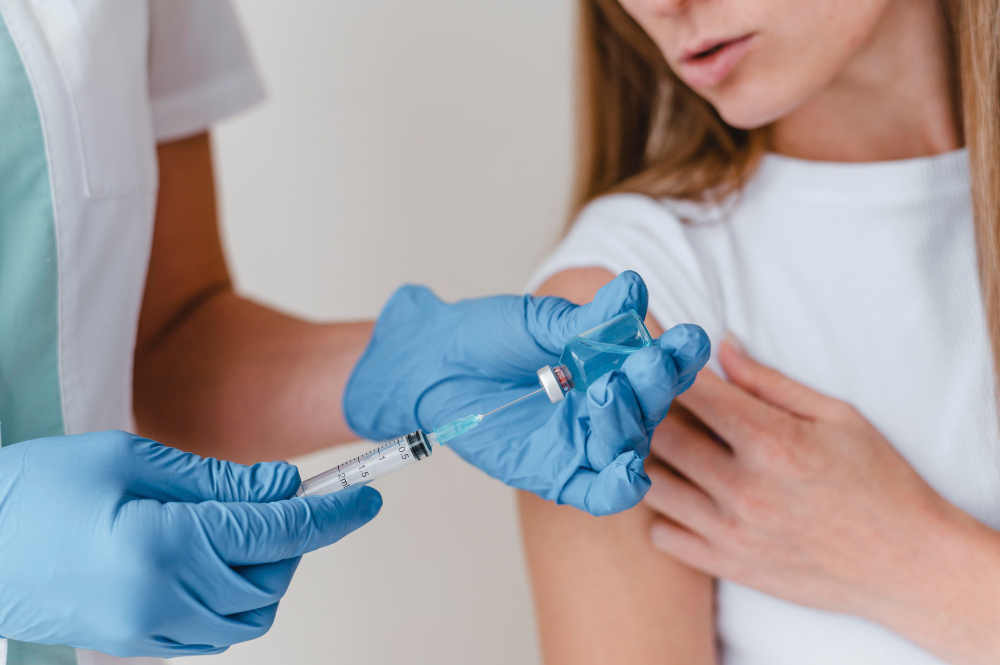healthcare

June 11,2025 • 4 min read
Mastering Techniques with PRP Injection Training: A Clinical Approach

Platelet-rich plasma (PRP) therapy has evolved from a niche treatment to a sought-after procedure across aesthetics, orthopedics, and sports medicine. As its clinical applications expand, the demand for precision in technique has never been higher. For medical professionals ready to incorporate regenerative treatments into their practice, PRP injection training is no longer optional—it’s essential.
Why Injection Technique Matters in PRP Therapy
The effectiveness of PRP therapy doesn't rest solely on the quality of the plasma—it’s also profoundly influenced by how and where it's injected. Whether it's targeting osteoarthritic joints, stimulating hair regrowth, or rejuvenating the face, accurate injection technique can make or break treatment outcomes.
A misdirected injection risks patient discomfort, reduced efficacy, and missed tissue targets. On the other hand, well-trained practitioners report improved healing response, enhanced patient satisfaction, and higher clinical success rates. That’s why the best PRP injection training programs emphasize not just theory, but technique mastery.
Live Model vs. Simulated Training: What Makes the Difference?
One of the core debates in regenerative medicine education is the value of live model training versus simulation.
-
Simulated training provides a controlled environment to develop foundational skills. It allows learners to practice anatomical targeting using mannequins, ultrasound guidance, and cadaver models.
-
Live model training, however, takes that experience to the next level. Injections on real patients or volunteers allow practitioners to adapt to variability in human anatomy, handle real-time feedback, and refine precision.
Programs that offer both formats often yield the most competent graduates. Many platelet rich plasma training centers now incorporate hybrid methods, ensuring that learners build confidence and competence before entering clinical practice.
Application-Specific Best Practices
Each area of PRP application comes with its own technical considerations. Effective PRP injection training addresses these in depth:
-
Joints (Orthopedic Focus):
-
Intra-articular injections require a deep understanding of joint anatomy and often the use of ultrasound guidance.
-
Accurate depth and placement reduce post-injection soreness and enhance therapeutic results.
-
Face (Aesthetic Focus):
-
PRP facial injections, such as those used in microneedling or facial rejuvenation, require even distribution, avoiding overcorrection and vascular structures.
-
A gentle touch is key—particularly in areas around the eyes and nasolabial folds.
-
Scalp (Hair Restoration):
-
Injection angle, spacing, and PRP volume impact follicular stimulation and patient tolerance.
-
Practitioners are taught to balance effectiveness with patient comfort during multi-session protocols.
Programs that excel in these modules often fall under the umbrella of a broader prp and stem cell training course, helping clinicians diversify their regenerative offerings.
Measuring Impact: How Skills Translate into Results
A 2023 clinical workshop audit by the American Journal of Aesthetic Medicine found that clinicians who completed comprehensive prp injection training had 47% higher patient-reported satisfaction scores compared to those without formal instruction. Moreover, the same group experienced lower complication rates, better retention, and faster integration of regenerative services into their practice.
The ability to properly administer PRP not only improves outcomes but also builds trust. Patients can tell the difference between a confident, well-practiced provider and someone who is improvising. That difference affects referrals, clinic reputation, and long-term success.
What to Look for in a PRP Training Center
Choosing the right PRP training center is a critical decision. Physicians should look for programs that offer:
-
Board-certified instructors with real-world clinical experience
-
Accreditation from recognized medical education bodies
-
Live model opportunities and hands-on modules
-
Ultrasound guidance instruction
-
Supportive post-training resources (e.g., protocols, follow-up coaching)
Avoid overly commercial programs with vague credentials or no live practice. Quality training pays dividends not only in safety but in building a successful regenerative portfolio.
Bridging the Gap Between Education and Practice
One of the most significant barriers to integrating PRP into routine care is the confidence gap. Even seasoned physicians can hesitate to offer regenerative procedures without hands-on experience. That’s why comprehensive platelet rich plasma training must be practical, not just theoretical.
By investing in credible education that includes detailed instruction, case-based learning, and guided injections, clinicians can go from hesitant observers to trusted regenerative experts.
Conclusion: Advancing Practice with Purpose
As regenerative medicine continues to shape the future of healthcare, competent application will define its success. PRP injection training is more than a skills upgrade—it’s a gateway to advanced treatment protocols, patient satisfaction, and clinical leadership.
For aesthetic doctors, orthopedic surgeons, and sports medicine specialists ready to elevate their practice, the time to learn is now. Look for accredited programs that offer expert-led instruction, hands-on opportunities, and a commitment to clinical excellence.
Explore high-caliber training programs at Regenerative Medicine Academy, where future-ready professionals build confidence, skills, and credibility in PRP and beyond.
Regenrative Medicine Academy Details
User Profile
- Full name
- Regenrative Medicine Academy
- Email address
- seoexperts188@gmail.com
- Join Date
- 2025-06-05
- State
- City
- Pincode
- Address
- Follow us on Facebook
- Follow us on Twitter
- Website Name
- Bio